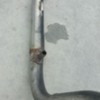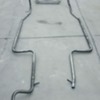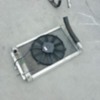It's sometimes hard to tell when posters are being sarcastic. Not only will it need a quality aluminum radiator, but it will also need efficient ducting, shrouding, and single or twin high-capacity electric fans that can move about 2500 cf of air. Turbos use heat to produce lots of power. The downside of that power is an increased heat load on components. 300 HP in a small block Chevy can be easier to cool than 300 HP in a Subi turbo. Many users are also converting to electric water pumps with controllers, either by itself or in series with the stock mechanical water pump. EWP's can pump up to 50 gpm at idle. Modern rads are designed for turbulent water flow that increased gallons/minute provide to shed heat efficiently.
Spyders are much easier to cool than Speedsters, since they have all that wide-open space that accommodates a big rad with ducts, shroud, fans, etc. Speedsters have a tough time getting sufficient cool air to the rad, since a large, conventional grill opening with upright rad doesn't lend itself to our cars.
A quality cooling system is a compromise, since it needs to work at idle speed and at WOT, in freezing temps and at 100+F temps. Those who think it's easy haven't tried to cool a Subi turbo engine in our cars, where space is at a premium. It's not tough with a naturally-aspirated engine putting out less than 200 HP. When the HP numbers go up, so do the headaches. If big power wasn't so much fun . . .






